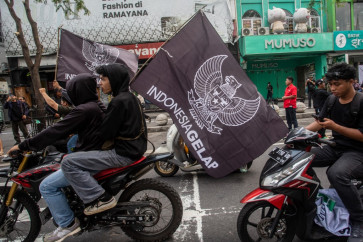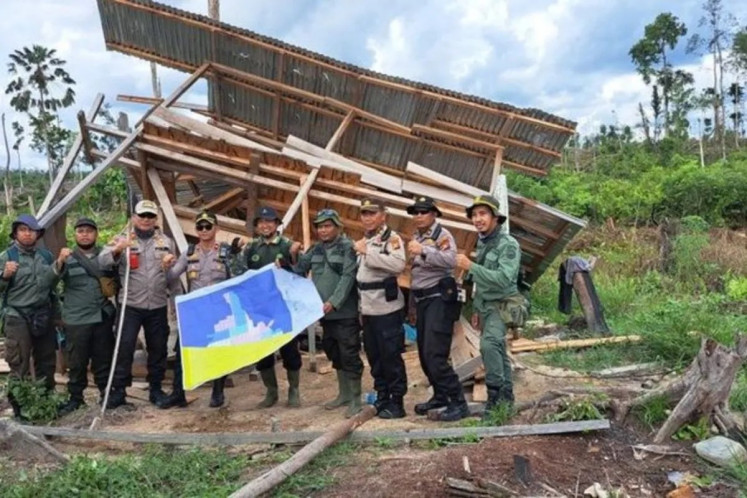Popular Reads
Top Results
Can't find what you're looking for?
View all search resultsPopular Reads
Top Results
Can't find what you're looking for?
View all search resultsCikarang residential place of choice for expatriates
Thanks to its ever-growing business and economic activities, the area of Cikarang, West Java, is now flocked by expatriates, paving the way for the growth of the local property industry
Change text size
Gift Premium Articles
to Anyone
Thanks to its ever-growing business and economic activities, the area of Cikarang, West Java, is now flocked by expatriates, paving the way for the growth of the local property industry.
The strong economic growth demonstrated by the region of Cikarang, West Java, as seen from the large number of multinational companies operating in the area, has apparently attracted a lot of expatriates to settle there.
Currently, some 4,000 companies are operating in Cikarang. It is estimated that approximately 1,000 expatriate workers are working in the area, driving up local demand for new homes and apartments.
In line with the constant supply of expatriate workers with high purchasing power in Cikarang, new shopping centers will also flourish in the city. It is estimated that in the next few years, there will be 21,000 workers employed in the city. The figure could even be bigger, considering that Indonesia will soon face the ASEAN Economic Community (AEC).
Thanks to this, Cikarang, which is one of Jakarta's eastern-corridor cities, is becoming the latest hub for property-business development. Furthermore, Cikarang is considered to have bright property-business prospects ahead. In terms of property business, the city is also seen as being more advanced than other cities in Jakarta's eastern corridors like East and West Bekasi.
'Cikarang has a very strong economic base. A lot of people who live in the area also work in the area, not in Jakarta or other places,' Indonesia Property Watch (IPW) executive director Ali Tranghanda was quoted by kompas.com as saying in Jakarta recently.
Furthermore, the abundance of expatriate workers from Japan and Korea in Cikarang has transformed the region into an 'Asian city' that represents the diversity of various Asian ethnicities.
'Thanks to the positive business growth in Cikarang, there has been [increasing demand] for special residential areas for the expatriates working in the area. The area can be [a place where] residential areas that can provide the expatriate workers a sense of safety [can be established],' he said.
According to him, Cikarang even already has a retirement home for older expatriates who have worked there for some time.
Growing industrial areas
Currently, there are at least three big industrial areas in Cikarang, developed by three of Indonesia's biggest property developers. The three areas have helped Cikarang achieve the status of a property hub among Jakarta's other eastern corridor cities.
'There are three big developers who are currently operating in Cikarang, namely Jababeka, operating a total of 5,600 hectares of land, Lippo Cikarang, with 3,000 hectares of land and Delta Mas with 3,000 hectares of land,' he said.
The high land absorption in Cikarang has also affected the growth of the property business in the area. Currently, the rate of land absorption in the area is much higher than that of Serpong and Bekasi, West Java.
'The total figure of land absorption rates in Cikarang, or the total amount of land sold by Jababeka, Lippo Cikarang and Delta Mas, has reached 125 to 134 hectares per annum. The figure is much higher than that of Serpong, which has only reached 32 to 92 hectares per annum, and Bekasi, which has reached 25 to 56 hectares per annum. We believe that the figure will continue to grow,' Ali said.
He attributed Cikarang's high land-absorption rate to the relatively affordable land prices there. Currently, Cikarang's land prices start at Rp 1.3 million (around US$108) per square meter and the highest land price stands at Rp 3 million per square meter.
Supporting infrastructure
In order to make staying in Cikarang more convenient for expatriates, the local government needs to build various supporting infrastructure in the area; a train to Cikarang is one.
'They [expatriate workers] don't want to use toll roads when they're traveling, because they are aware that traffic congestions can also happen on toll roads. They want to ride trains in order to be able to get to their workplaces faster,' he said.
The high mobility of people who travel from Cikarang to Jakarta and vice versa is one of the reasons why the government needs to build an electric train allowing access to the capital city from its eastern corridor cities.
According to state-owned train operator PT Kereta Api Indonesia's (KAI) operational region 1 public relations head, Agus Komarudin, as quoted by kompas.com, the government is currently constructing a railway connecting Manggarai in East Jakarta to Bekasi, West Java.
'The government is currently constructing a double-track railway,' he said, adding it was expected that the construction would be finished sometime around 2016.
Currently, according to Agus, the railways for electric, locomotive and intercity trains are located on the same tracks in Manggarai and Bekasi. This is why KAI is constructing a double-track railway, which would separate them.
Airport construction
Aside from railway transportation, talks are underway to construct an airport in the Cikarang area thanks to the positive business and economic growth in the area.
'Since around 2011 and 2012, people have talked about the possibility of constructing a 3,000 to 4,000-hectare airport [in Cikarang]. Soekarno-Hatta airport's limited capacity, which amounts to only 70 million passengers annually and keeps increasing by 1.1 percent, makes it necessary to construct another airport,' Ali said.
He said that the airport, which would have the capacity to service 100 million passengers, could probably be constructed in the Ciampea area on the southern side of Karawang.
Aside from an airport, Cilamaya port will also be built in the northern part of Karawang. Another piece of infrastructure that will be built in the area is a 200-hectare dry port in Jababeka that will serve as an extension of the Tanjung Priok international port gateway.
Currently, Cikarang needs to improve its transportation facilities to further boost its already strong property sector and overall economic performance.
'Once we have a strong economic base, we need to complement it with strong accessibility. The industrial area will succeed if it has good access [to other areas],' he said. (JP)










